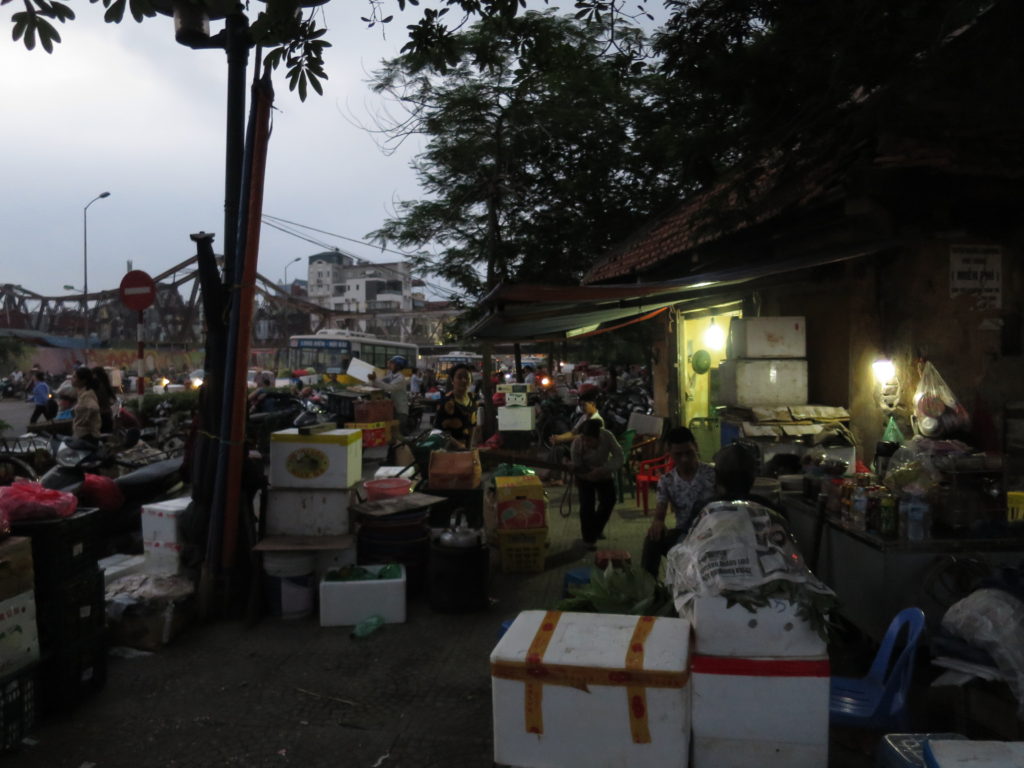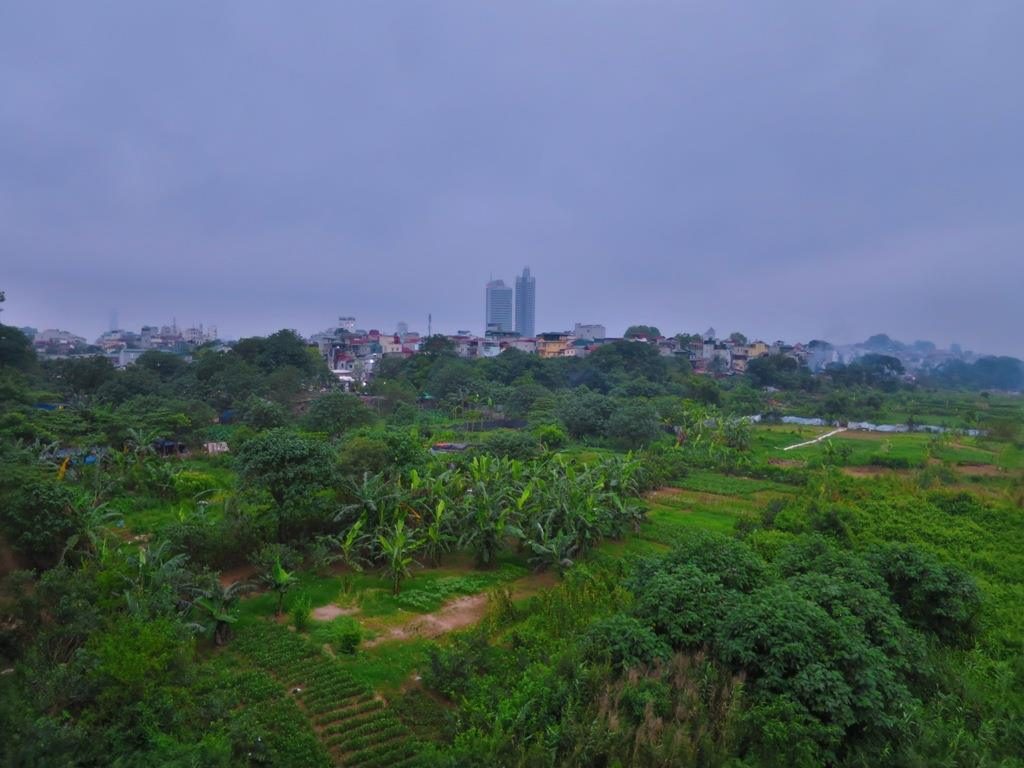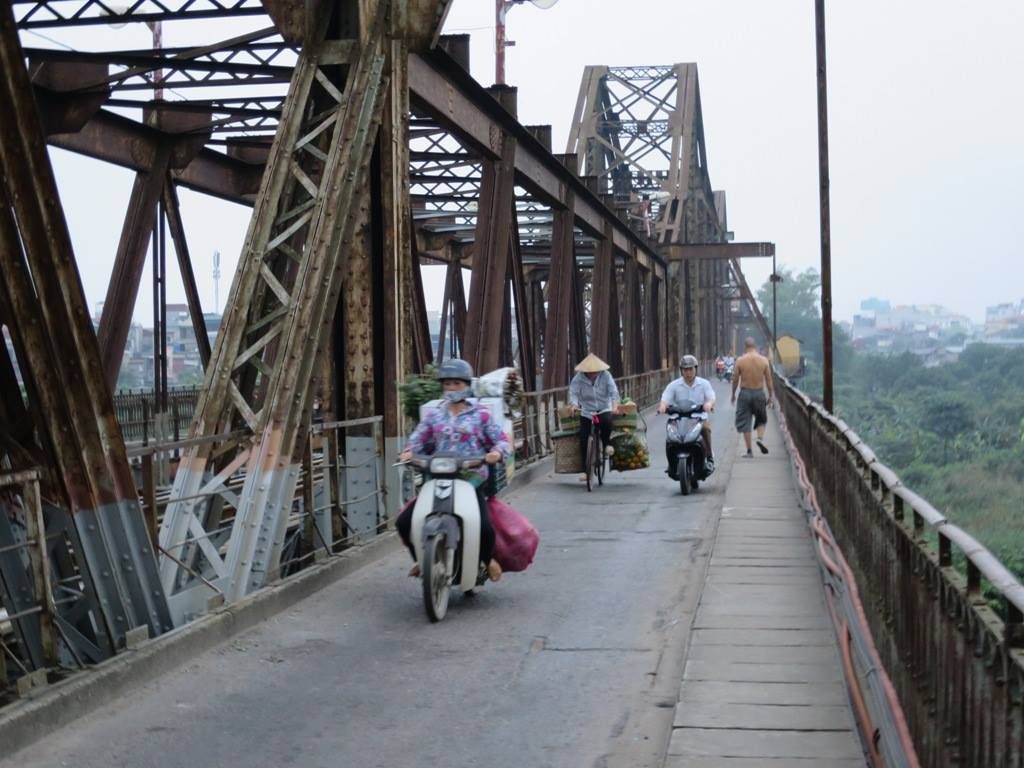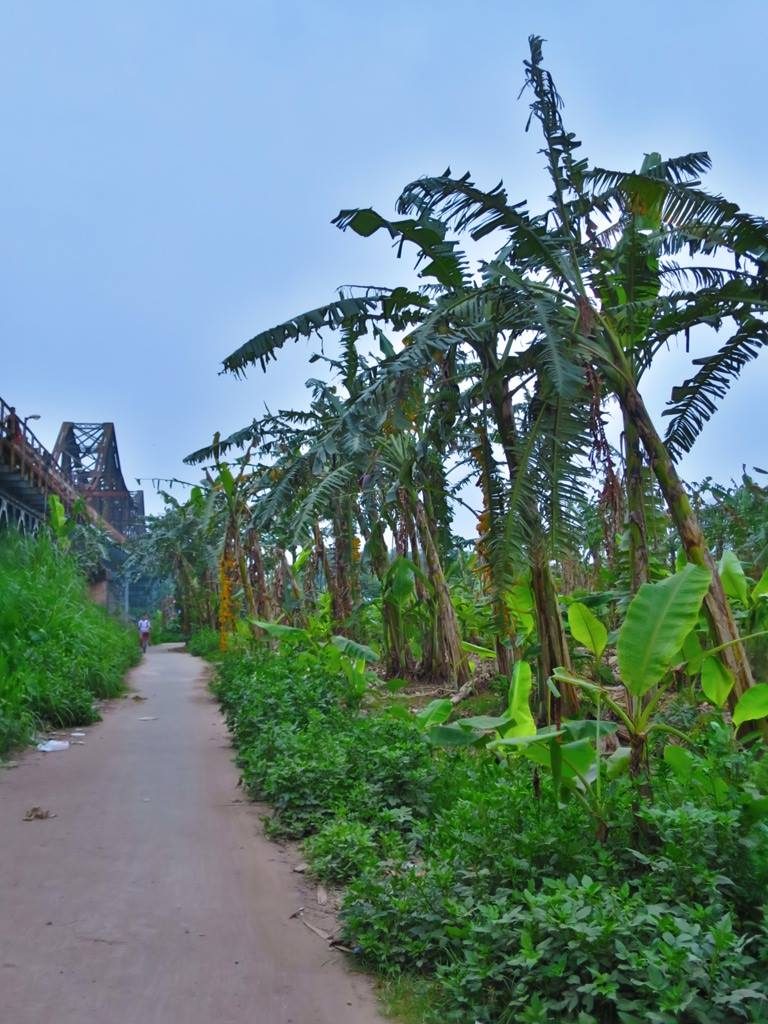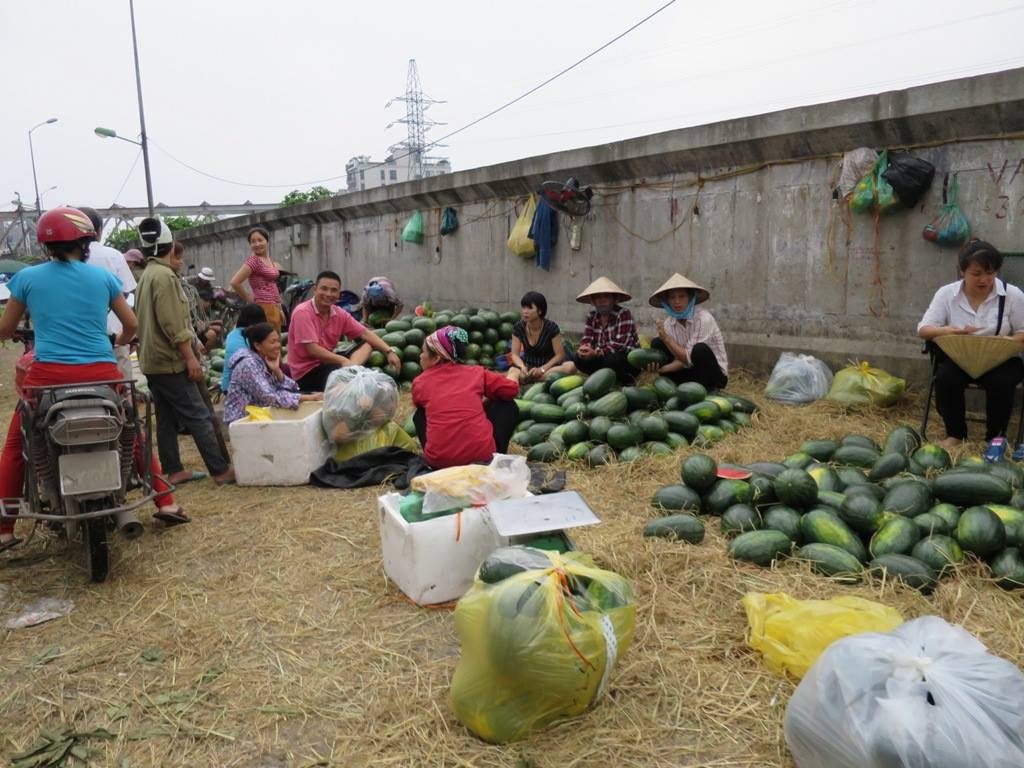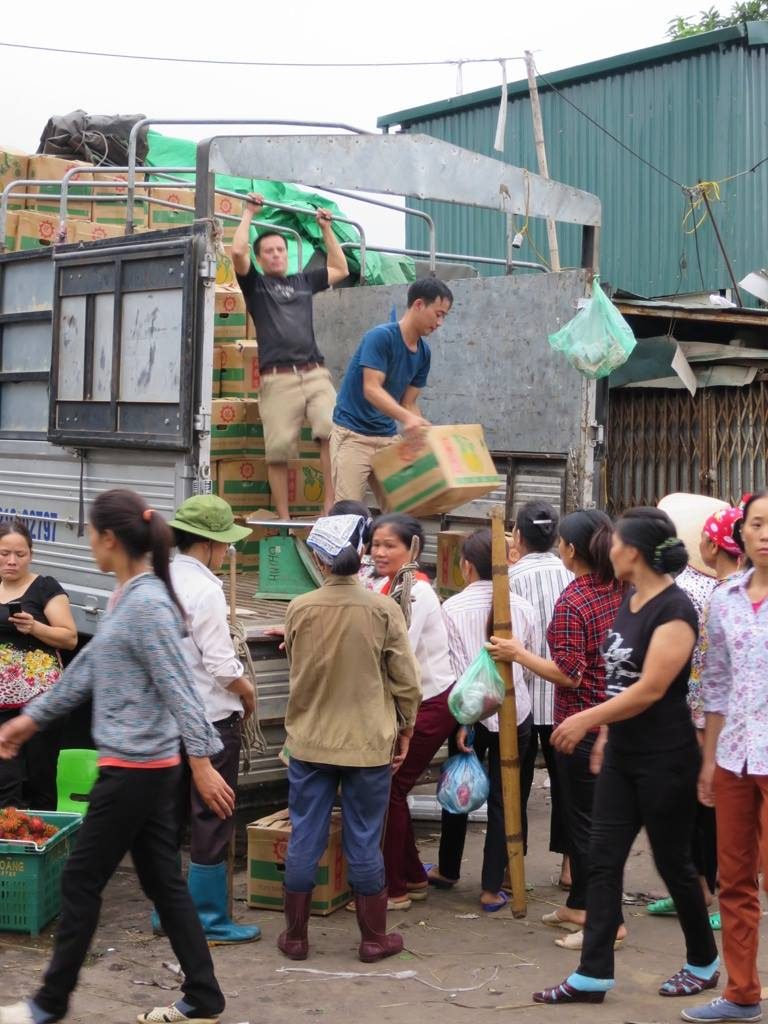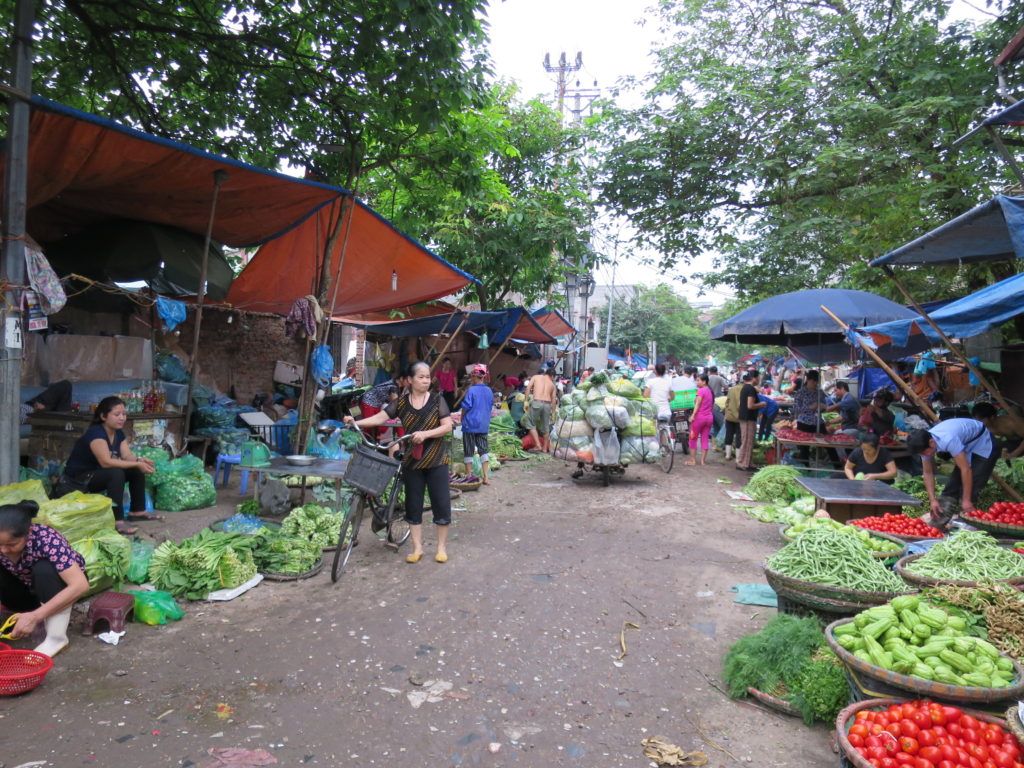Photographs of Long Bien Market at Daybreak
You know you’ve missed Hanoi’s Long Bien market at its peak when you can take photographs without getting pushed aside. However, it wasn’t even my intention to see the market on my first visit to Vietnam.
I’d set out from the Old Quarter at 5 that morning to snap the sunrise over the Long Bien bridge. While I didn’t get that iconic shot, I found myself wandering through one of the great street markets of Asia as it began to wind down.
The Long Bien Bridge
Here’s a quick fact check: Although Gustave Eiffel’s company worked on bridges in Hue and Bien Hoa, it never had a role in Long Bien as erroneously claimed by many websites and tour guides. For a long time, it was the only bridge that spanned the Red River. The Americans bombed it repeatedly during the war; the parts that were destroyed were never restored to their former appearance.
The largest part that has survived stands on the same side of the river as Hanoi’s Old Quarter. To get onto the bridge, there are two ramps, and each leads to a different side of the railway tracks. The ramps pass over Duong Tran Nhat Duat street, giving a bird’s eye view of the market below.
Unfortunately for me, I’d woken up early and fought condensation on my camera to see an overcast sky. I carried on walking down the bridge in search of a good spot on the river bank. Grey skies and murky waters wouldn’t matter if I shot in black and white.
As I walked, the market and its shanty town were quickly replaced by fruit plantations and paddy fields. The noise of the city was far behind, and the air was fresher, but only just. I had to share the narrow lane with scooters, overloaded bicycles and sticky middle-aged joggers.
Related: A day trip to Tam Coc from Hanoi
I didn’t succeed in finding the vantage point that I was looking for. While I had a workshop to prepare and didn’t have enough time to explore the paths around the plantations, there was just enough to have a quick look around the Long Bien market.
The Long Bien Market
The market is at its busiest between 1 and 5 in the morning every day. At that time, the trucks arrive from China, the ports and the countryside. Restaurant owners and suppliers throng the place in search of fresh produce at the best prices. It’s a steamy sea of people that I was happy to miss.
At daybreak, the place is hardly a ghost town. There were still plenty of ladies selling melons on straw beds. Baskets were still filled with chillies of different shapes and hues. Workers were still unloading crates of mangoes from trucks in the parking lot. It was still as noisy and incomprehensible as you might expect. Everything that one would’ve wanted to see was still happening, with 70% of the atmosphere but infinitely more space for observing.
The biggest plus point of turning up late, however, was the possibility of seeing and photographing both the unlit bridge and the market at the same time. Both the bridge’s rust-red trusses and the people trading in its shadow represent the city’s resilience through the decades. In these pictures, it forms the perfect backdrop.
I didn’t get the picture I set out to take, but I got one that was worth keeping and sharing.
For a market of a different kind: St Dominic’s Fair, Gdansk.
